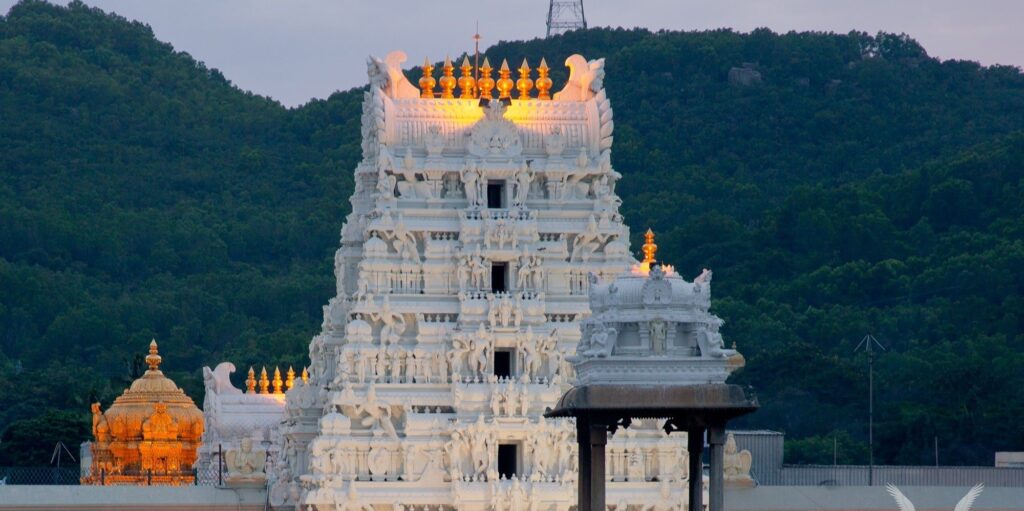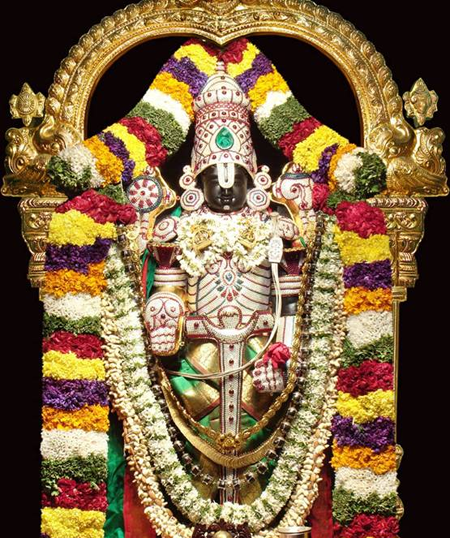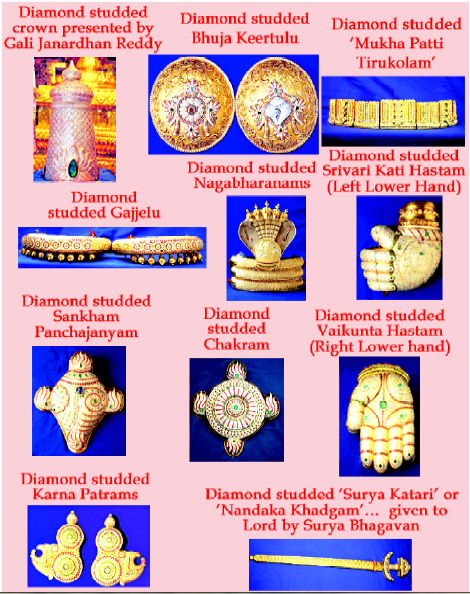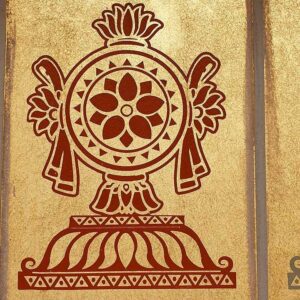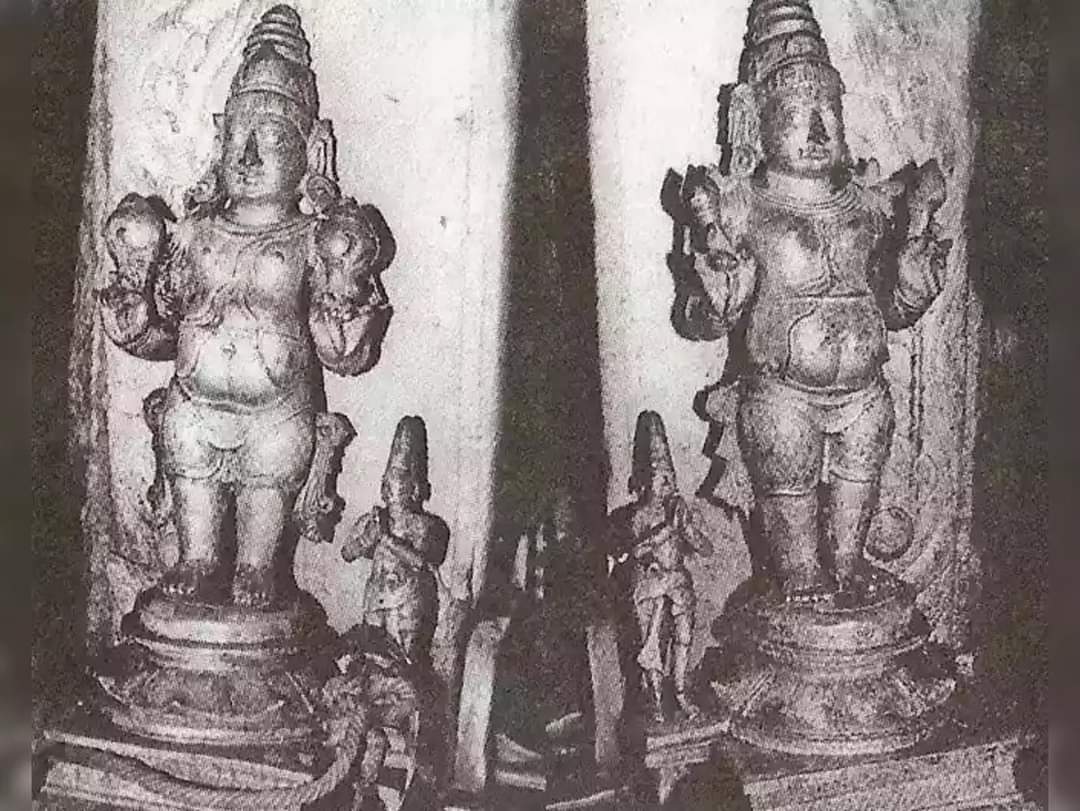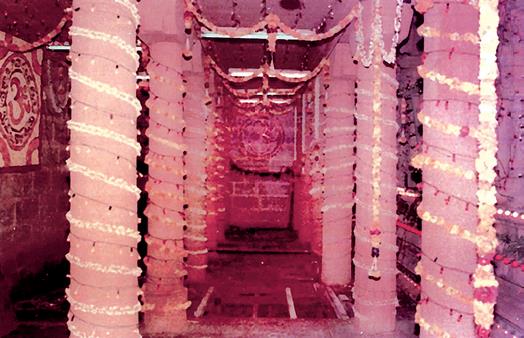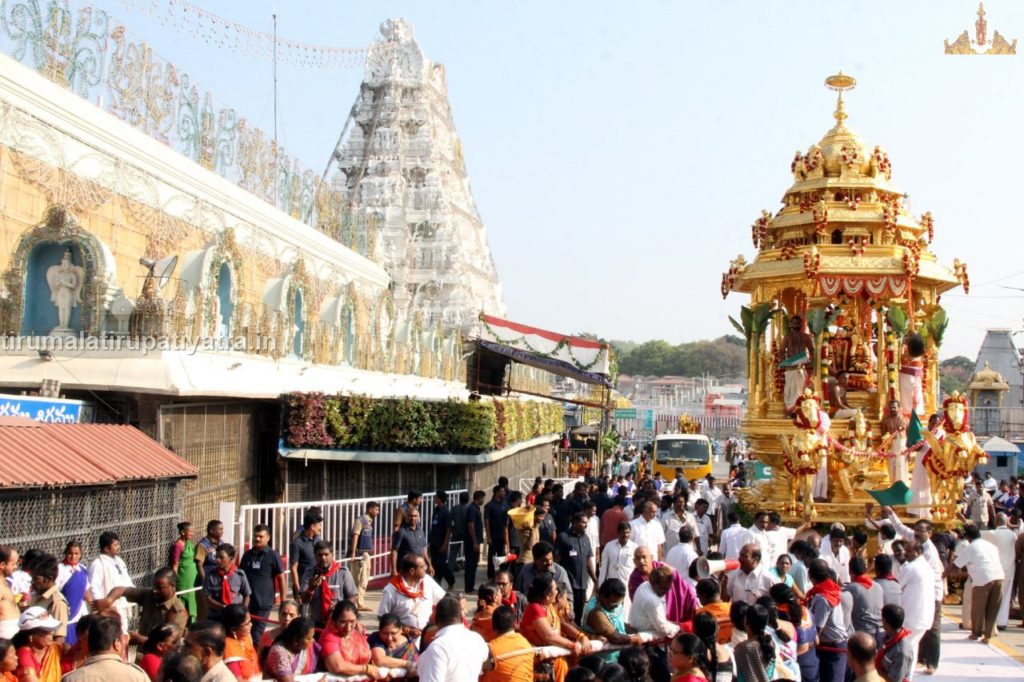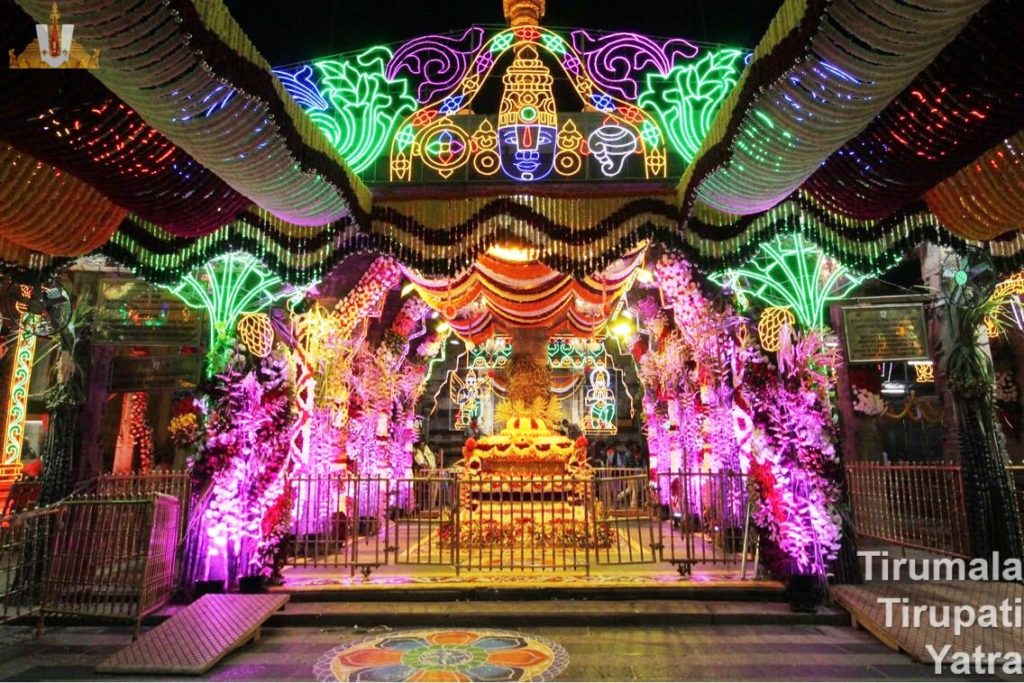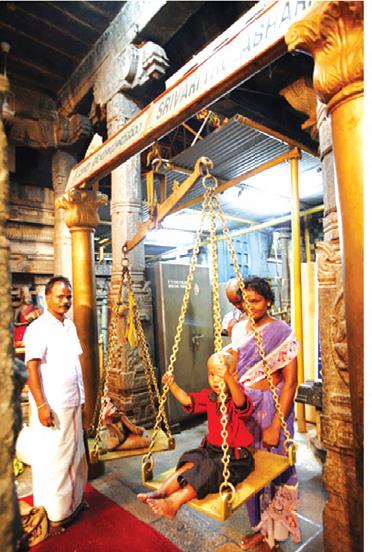Sapthagiri (eesa) – Govinda
The Sanskrit word ‘Saptha’ refers to the number Seven. It is indicated in various names as –
- 7 days a week,
- 7 colours in a rainbow,
- 7 horses of the Sun God,
- 7 chakras including sahasrara in upasana,
- 7 swaras in music,
- 7 steps during marriage,
- 7 upper lokas,
- 7 lower lokas,
- 7 hills (Tirumala).
Moreover, the number 7 has a great connection with Lord Venkateswara, the presiding deity of Tirumala in many ways. Let us examine how it is.
Tirumala Kshetra is located amid a group of seven sacred hills called ‘Sapthagiri‘. In Venkatachala Mahatyam these seven hills are said as seven heads of Adisesha (the king of serpents).
The seven peaks or the heads are called with the names –
- Seshadri
- Vrisardri
- Garudadri
- Anjanadri
- Vrishabhadri
- Narayanadri
- Venkatadri.
Hence Lord Venkateswara swami is also called – Edukondalavada Govinda (the resident of Seven Hills) and Saptagireesa Govinda (the king of Seven Hills).
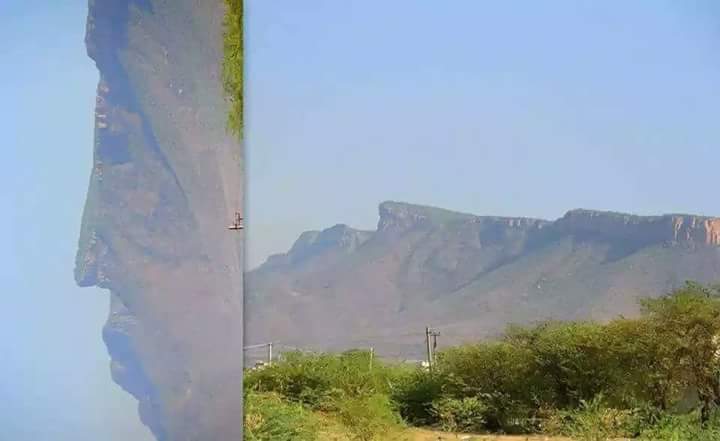
Saturday
The seventh day of the week is Saturday. It is a very auspicious day for worshipping Lord Venkateswara. As per Vedic astrology, every day of the week is associated with a planet in the solar system. In that way, Shani (Saturn) is the Lord of Saturday.
Once Lord Venkateswara swami had taken a promise from Shani Bhagavan that he would never trouble his devotees. Hence the devotees worship Venkateswara swami on Saturdays with a lot of devotion and dedication to get rid of obstacles caused by Shani Bhagavan.
Saturdays – Month of Shravana
Among all Saturdays, Saturdays that come in the month of Shravana are very important because – in Shravana masam the full moon day occurs in Shravana star. Hence this month is called Shravana masam. Moreover, the Shravana star is the birth star of Sri Venkateswara swami.
This nakshatra comes under Makara rasi (Capricorn). The Lord of Makara rasi is Shani bhagavan (Saturn).The seven Saturdays vratam is also observed by some devotees during this month itself.
Tirumala Saturdays OR Vishnu Saturdays
The four Saturdays in the Tamil month of purattasi are also considered very auspicious for worshipping Lord Venkateswara. During this month the Sun will be in Virgo, the zodiac Sign ruled by Mercury. The Lord of Mercury is Vishnu, the God of wealth and prosperity.
Also, it is known from the legend that Lord Vishnu descended to this earth as Sri Venkateswara during the Tamil month purattasi itself. Hence these Saturdays are called Vishnu Saturdays or Tirumala Saturdays (Tirumala Shanivaralu in Telugu).
One very Saturday of purattasi month the devotees observe fasting and light a lamp (a lamp made of rice flour, jaggery and ghee) and do Govinda bhajans.
Later they offer the 7 favourable dishes
- Sweet Pongal (jaggery rice),
- hot pongal (pepper rice),
- tamarind rice,
- curd rice,
- vada,
- laddu,
- sundal (boiled channa)
to Lord Venkateswara Swami for his divine blessings.
Celebrated for nine days
The seventh month of the Telugu calendar is called Aswayuja masam. Tirumala brahmotsavam is an annual festival performed to Lord Venkateswara Swami, celebrated for nine days every year during this month in such a manner that the utsavam should be concluded on Shravana nakshatra.
Of course, another brahmotsavam will also be organized at Tirumala when there will be an Adhikamasam (extra month) during Navarathri.
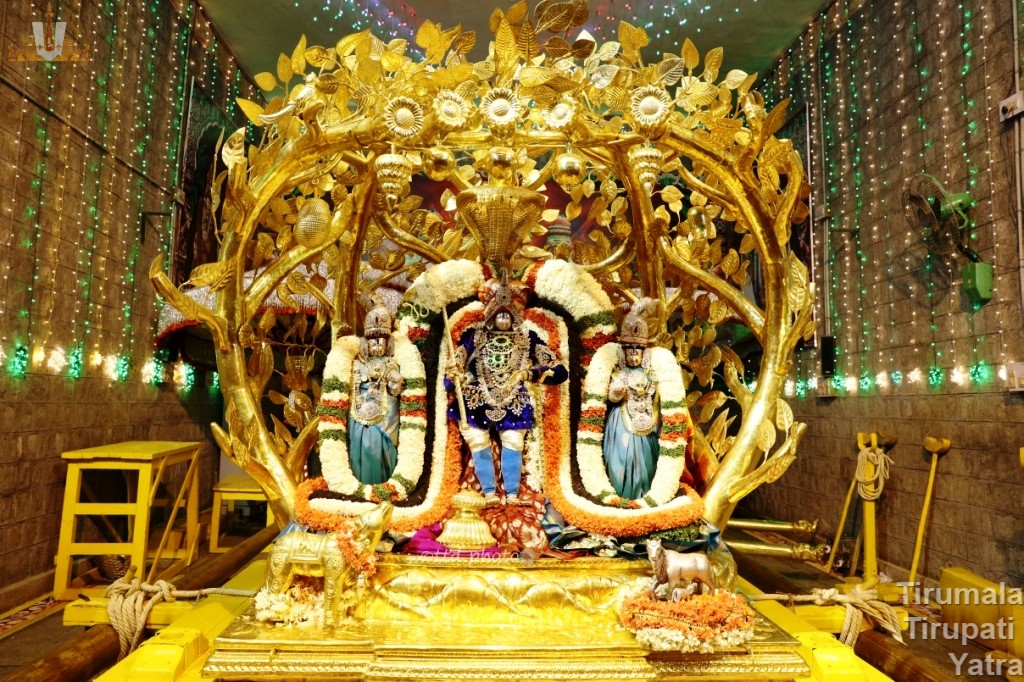
During this nine-day festival, Lord Malayappa swami (processional deity) along with his consorts Sridevi and Bhudevi go in procession two times (morning and night) daily on vahanams.
Rathasapthami – Mini Brahmotsavam
Maghasuddha sapthami (the seventh day in the brighter phase of lunar cycle of Telugu month Magha) of every year is celebrated as Rathasapthami. It is symbolically represented in the form of Sun God Surya turning his Ratha (chariot), drawn by seven horses with Aruna as the charioteer towards the northern hemisphere in northeastern direction.
This day also marks the Birth of Surya and is hence celebrated as Surya Jayanthi. Based on this one-day, brahmotsavam called ‘Mini Brahmotsavam’ is organized at Tirumala. On this day Lord Malayappa swami will proceed on saptha (seven) Vahanams through the holy streets around the temple.
It is a big chance for the devotees to have the darshan of Sri Malayappa swami on seven vahanams in a single day.
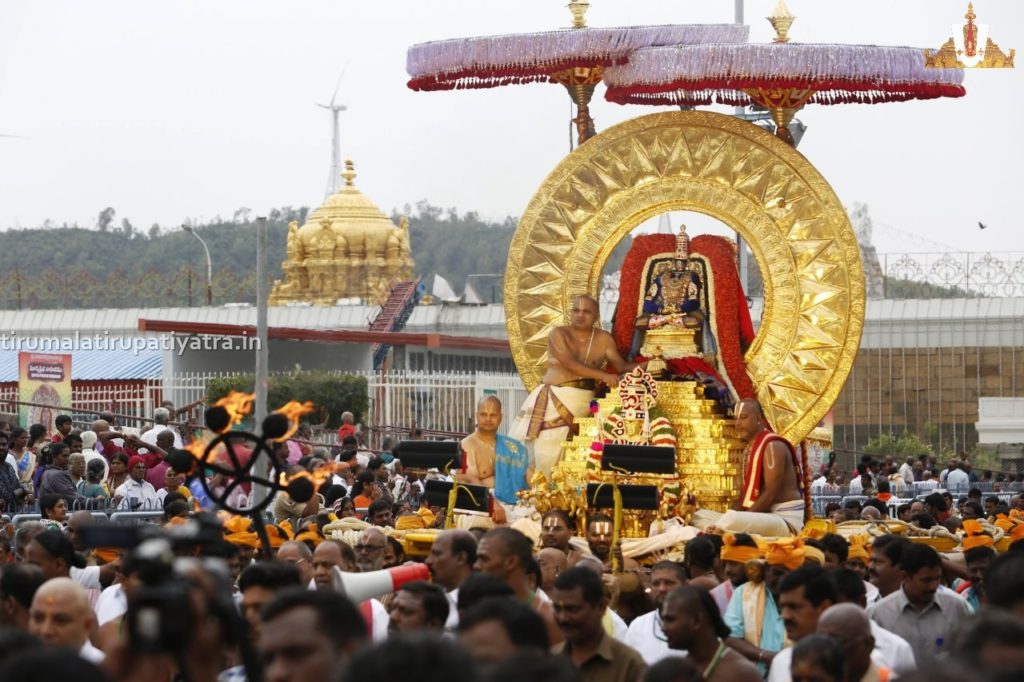
Planets
In astrology, every planet is allotted a number. As per that seven is a Ketu number. Ketu is the planet of obstruction. The Lord of Ketu is Lord Ganesha. Soon we should worship Lord Ganesha to overcome the obstacles created by Ketu.
People believe that different incarnations taken in previous yugas by Sri Venkateswara Swami represent the different planets in their tattwa (nature). Hence, they worship the following incarnations to get relief from planetary troubles.
Avatars
- Ketu-Matsyavatara,
- Saturn-Koormavatara,
- Rahu-Varahavatara,
- Mars-Narasimhavatara,
- Jupiter- Vamanavatara,
- Venus-Parusuramavatara,
- Sun- Ramavatara,
- Moon-Krishnavatara,
- Mercury – Kalki
is an avatar to be taken by Lord Venkateswara at the end of Kaliyuga.
Till then He resides on these seven hills in the form of Archamurthy (idol form) and protects the people from the troubles of Kali, a demon.
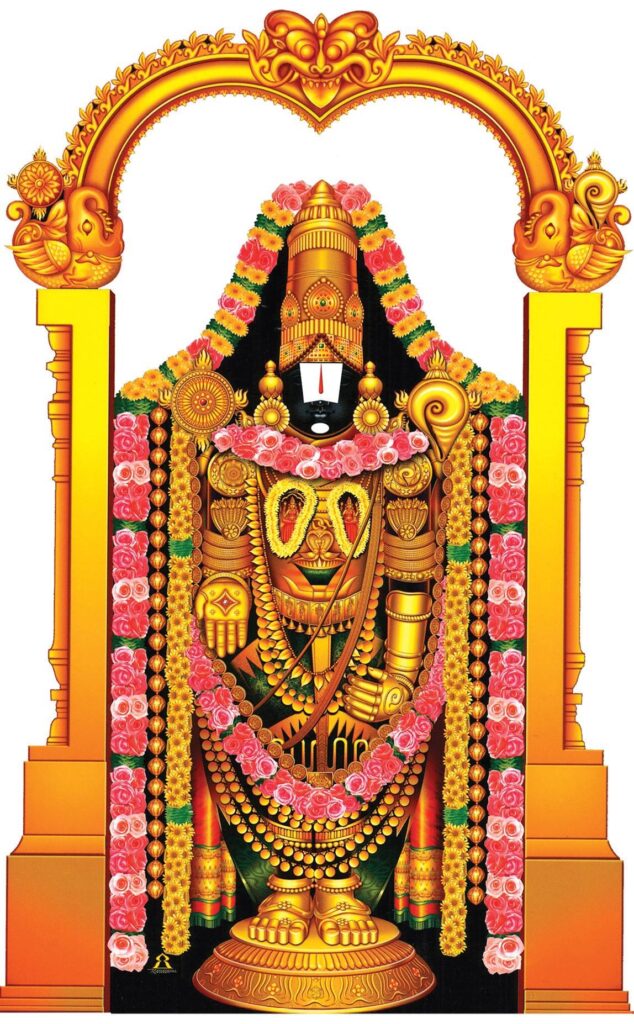
What a lucky number seven is! We too associate with Lord Venkateswara Swami in every possible way for his divine grace.
